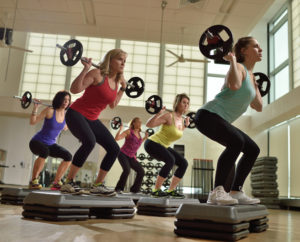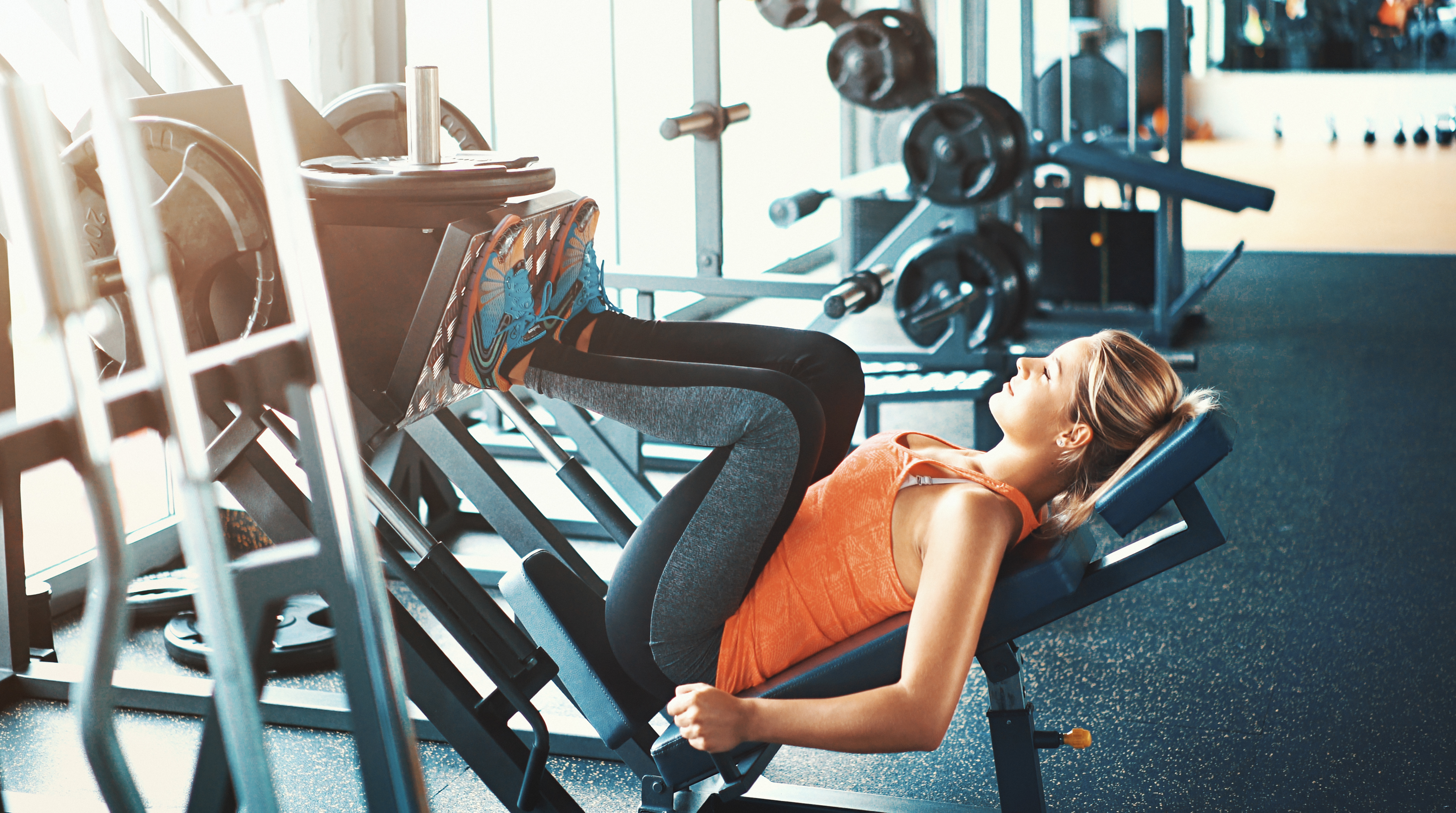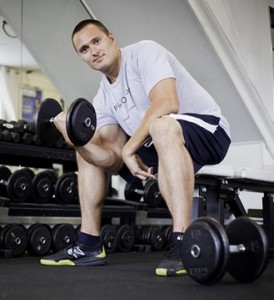by Michelle Sutton-Kerchner
Unhealthy cholesterol levels? Improve them, and your overall health, with a little sweat …
Simple changes can help improve cholesterol. This is welcome news when it comes to eliminating a risk for heart disease. Before resorting to medication, physicians often suggest exercise and diet modifications to increase HDL (good) and decrease LDL (bad) cholesterol levels. These lifestyle adjustments also help lower unhealthy triglyceride levels.
What Does It Take?
As National Cholesterol Education Month, September provides another opportunity to share the benefits of exercise—this time on cholesterol. The impact of exercise on cholesterol can be summarized: Some exercise is better than none and more is better than some!
 Goals:
Goals:
Four 40-minute moderate- to vigorous-intensity cardio workouts per week.
or
Vigorous exercise for approximately 75 minutes per week.
To raise HDL, lower LDL, and lower triglycerides, experts recommend exercising at moderate to high intensity for a minimum of 30 minutes most days of the week.
Be Flexible:
Combine intensity levels. If your day is overbooked, do a short, more intense workout. When you have time but lack energy, exercise longer with less intensity.
Break it up. On days you cannot spare a solid block of time, exercise in 10- or 20-minute segments. A personal trainer can share mini-workouts to manage at the office or between errands. Check out https://fitnessandwellnessnews.com/power-full-mini-workout/ for more ideas.
What Type of Workouts Are Best?
Studies prove a combination of aerobic and strength training get the best results, including with cholesterol goals. The exercises synergize to achieve greater outcomes in fat loss, heart health, weight loss, and muscle gain.
Cardio Training:
 To notice the biggest improvement in cholesterol, one study indicated vigorous exercise had the biggest impact. Participants consisted of sedentary, overweight individuals who did not adjust their diet.
To notice the biggest improvement in cholesterol, one study indicated vigorous exercise had the biggest impact. Participants consisted of sedentary, overweight individuals who did not adjust their diet.
Those who moderately exercised, performing the equivalent of 12 miles of jogging or walking weekly, lowered LDL. Those who vigorously exercised, performing the equivalent of a 20-mile jog per week, accomplished a bigger impact on LDL levels. To improve HDL levels, a significant amount of high-intensity exercise was required.
Strength Training:
A six-pack to help your cholesterol? Ab-wise, you bet! The American Heart Association recommends strength training a minimum of twice weekly. Building muscle mass improves your metabolic rate. The increased metabolic rate allows you to burn more calories, including while at rest. If you are overweight, shedding only 10 pounds can lower LDL cholesterol by up to eight percent!
For the biggest cholesterol benefits, experts recommend increasing repetitions, not weight, as you progress. A personal trainer can customize a program for your needs. Use the Center’s equipment, free weights, and exercise bands—or resistance train with your own body weight. Focus on those reps!
Mind-Body:
Stress negatively impacts health in many ways. During stressful times, cholesterol numbers quickly can worsen. Those who get hostile under stress (a poor coping mechanism) exacerbate the effect. Exercise works directly to improve cholesterol, while simultaneously providing stress relief that further helps.
 Consider adding mind-body workouts to your fitness regimen. Done regularly, this complements your cardio and strength training by easing stress and cultivating a more balanced life.
Consider adding mind-body workouts to your fitness regimen. Done regularly, this complements your cardio and strength training by easing stress and cultivating a more balanced life.
Yoga, Pilates, and T’ai Chi are among the most popular mind-centered workouts. However, any exercise can be done mindfully to help alleviate stress. Melt away physical and mental tension by connecting your mind with the movements of your body. Cholesterol worries? What cholesterol.
Sources
“How to Cut High Cholesterol and Heart Attack Risk With Exercise,” by Toni Gerber Hope at everydayhealth.com.
Webmd.com
Image Credit
Arm curls: www.flickr.com/photos/121183998@N08/13335780903/
 Fitness & Wellness News Your Source for Fitness News, Wellness News, Health News, and Nutrition News!
Fitness & Wellness News Your Source for Fitness News, Wellness News, Health News, and Nutrition News!





